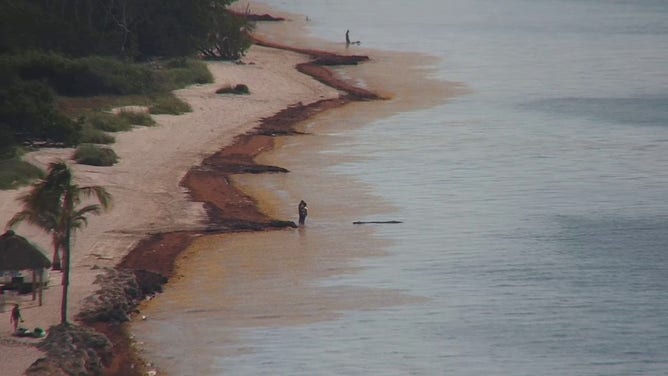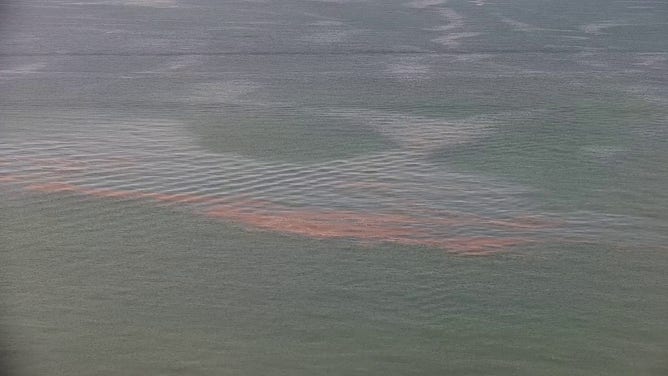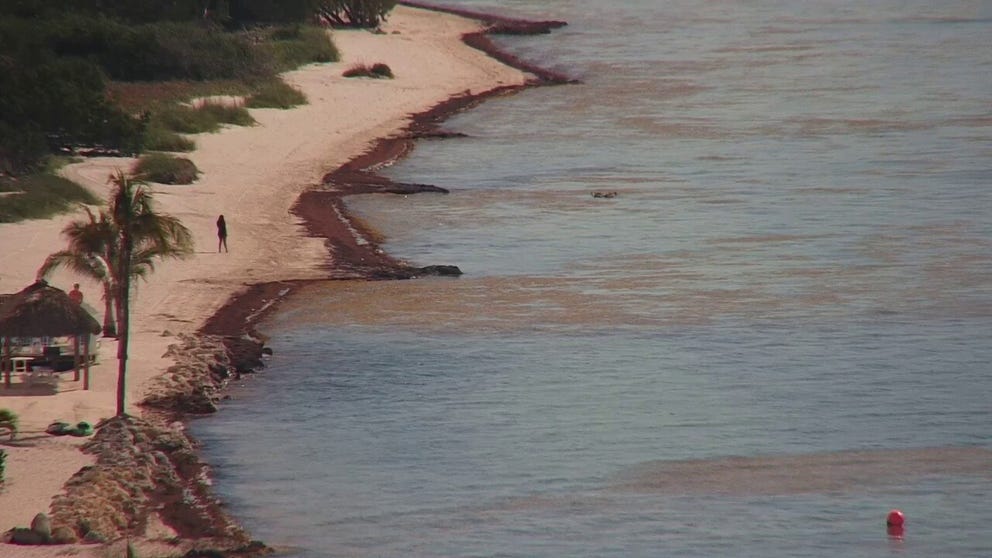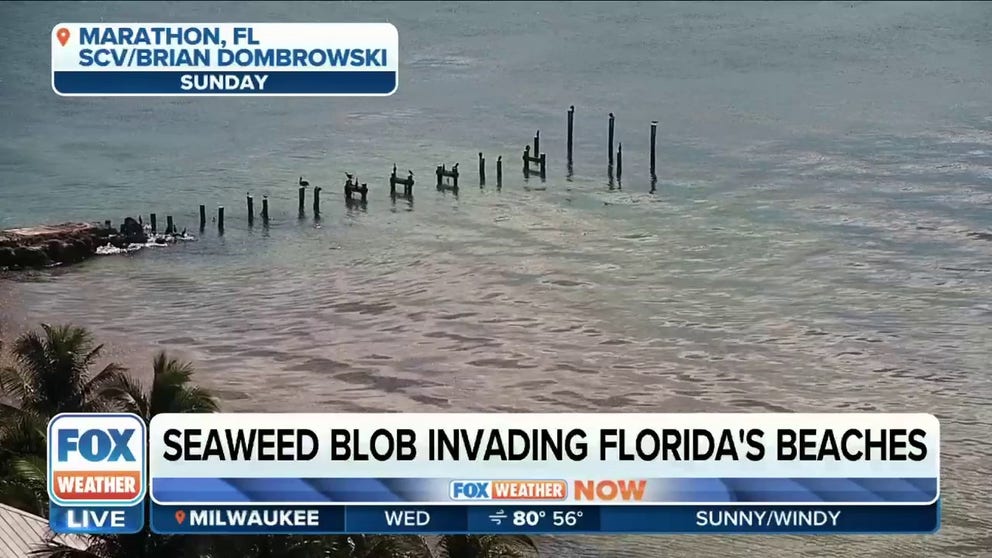Aerial video captures scope of 5,000-mile-wide blob of smelly sargassum seaweed invading Florida Keys
Scientists had been warning beachgoers of the possibility of the 5,000-mile-long stretch of seaweed taking over Florida beaches this spring and summer, and it appears as though it has started to become a reality after the video showed large piles of smelly seaweed along Cocoplum Beach in Marathon as well as floating offshore.
Watch: Massive blob of sargassum seaweed invading Florida Keys
A 5,000-mile-wide blob of floating sargassum seaweed has reached the Florida Keys, and video from Cocoplum Beach on Easter Sunday in Marathon, Florida, shows it washing on shore and piled up along the beach.
MARATHON, Fla. – Aerial video recorded in the Florida Keys shows a massive blob of sargassum seaweed that started to push onshore along local beaches on Easter Sunday.
Scientists had been warning beachgoers of the possibility of the 5,000-mile-long stretch of seaweed taking over Florida beaches this spring and summer, and it appears as though it has started to become a reality after the video showed large piles of smelly seaweed along Cocoplum Beach in Marathon as well as floating offshore.

An image showing massive amounts of sargassum seaweed invading a beach in the Florida Keys.
(SCV/Brian Dombrowski)
The Florida Keys sit close to the Gulf Stream, where the sargassum tends to be thicker in the offshore currents.
Due to the occasional onshore flow, patches tend to make their way to the coast and can lead to some unpleasant days on the beach where visitors have to walk through seaweed and occasionally get a whiff of a smell described as resembling rotten eggs.
FLORIDA KEYS CAUTIOUSLY WATCH VISITOR SENTIMENT FOR IMPACTS OF INCOMING SEAWEED

A wide look as large piles of sargassum seaweed that have invaded beaches in the Florida Keys.
(SCV/Brian Dombrowski)
According to the Florida Health Department, the seaweed is not harmful to humans but can still lead to impacts. Aside from an unpleasant odor, tiny creatures living in the sargassum can produce rashes and blisters.
Health experts advise people never to eat seaweed because it may also contain heavy metals such as arsenic and cadmium.
Seaweed blob makes its way on shore across Florida's East Coast
University of South Florida Professor of Optical Oceanography Chuanmin Hu weighs in on the brown tide invasion.
For many species of marine life, the brown algae are considered to be helpful, and biologists believe that the buildup provides food and refuge for fish, crabs, shrimp and other smaller organisms.
MASSIVE BLOB OF SMELLY SEAWEED COULD MEAN TROUBLE FOR FLORIDA BEACH VACATIONS

A large blog of sargassum seaweed is seen floating in the water off Marathon, Florida, on Easter Sunday.
(SCV/Brian Dombrowski)
The sargassum is quite different from the red tide event that is simultaneously impacting Florida beaches, mainly along the Gulf Coast.
Red tide is a harmful algal bloom and was spotted in the days after Hurricane Ian in Southwest Florida and expanded during early 2023.
The ongoing toxic event caused hundreds of fish to wash ashore, and biologists believe that even manatees have been impacted by high levels of the organism known as Karenia brevis.

